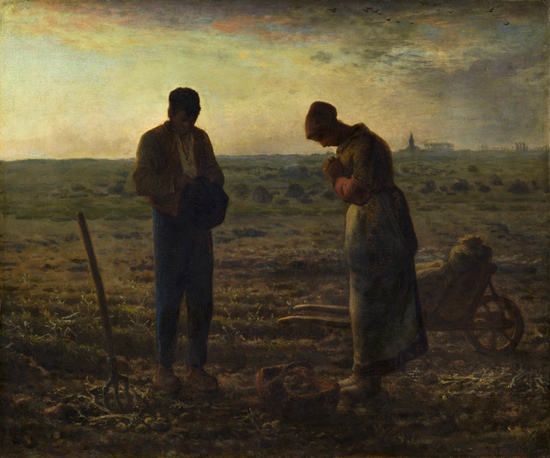One of the benefits of finding biographies written by friends of an artist is that we can sometimes learn how the artist described his own work. The Angelus by Jean-Francois Millet is one of those paintings.
Completed in 1859, The Angelus was one of Millet’s favorite paintings. He had wished to give an impression of music – the sounds of the countryside in harmony with ringing church bells. Can you hear them too?

A peasant couple pause in their labors as they hear the Angelus. We don’t know if it is sunrise or sunset but the sun lightens the sky as if to join the bells in spreading good-will. You can almost hear the pair reciting the words “Angelus domini nuntiavit Mariæ.”
Sensier describes the work far better than I could. “The man, a true peasant of the plain, his head covered by a mass of short straight hair like a felt hat, prays silently; the woman is bent and full of devotion. Into it Millet put the whole strength of his color.” He knew at once, despite viewing the painting in an incomplete state, that Millet was painting the Angelus.
There were several who would be truly fascinated by the painting but none seemed willing to purchase The Angelus.
Sensier claims that Millet submitted The Angelus to the Universal Exhibition in 1867, an event was open to any works produced after 1855. Another biographer, Percy Moor Turner (1905-1952) claims the painting was sold in 1859 to an architect for 1800 francs and never exhibited by Millet. Turner was a British art dealer who wrote biographies for Millet and Sir Anthony van Dyck (1599-1641). The Musée d’Orsay, current owner of the painting, suggests it was part of the dans la collection Papeleu in 1860 and agrees that the work was part of the Universal Exhibition of 1867. The Angelus would be exhibited around the world; traveling to places like Russia, Japan, the United States, Belgium, Austria and Brazil.